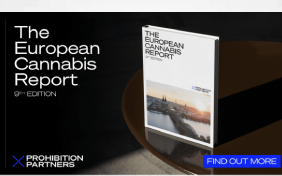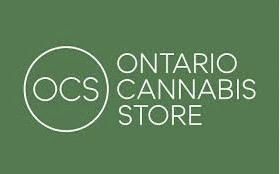c/- Lexology
The regulatory regime
i ClassificationBroadly, there are three categories of therapeutic goods under the TG Act, namely biologicals, non-biologicals and medical devices. Biological and non-biological therapeutic goods are distinguished on the basis that biologicals comprise, contain or are derived from human cells or human tissues, whereas, as the name suggests, non-biologicals do not. Medical devices are products whose principal intended action is not by pharmacological, immunological or metabolic means. The TGA has the power to specify products that do, or do not, fall into these categories; for example, recombinant products (such as antibodies) are not biologicals.
Devices that are used to administer medicines, for example a transdermal patch containing medicine, are regulated as a medicine rather than a medical device. The TGA provides guidance on the appropriate classification of products that are on the device-medicine boundary.
The TG Act also applies to foods, cosmetics, chemicals and general consumer products in respect of which therapeutic claims are made. For example, a moisturising preparation that contains a sunscreen agent as a secondary component and has a stated therapeutic purpose (e.g., ‘helps protect skin from the damaging effects of UV radiation’) is regulated as a medicine.
ii Non-clinical studiesAlthough the use of animals in research is separately regulated by each state and territory, all require compliance with the Australian Code for the Care and Use of Animals for Scientific Purposes (Animal Code). The purpose of the Animal Code is ‘to promote the ethical, humane and responsible care and use of animals for scientific purposes’. In most cases, an institution must be licensed to conduct such research.
The TGA has adopted a number of the European Medicines Agency’s scientific guidelines for non-clinical studies.
iii Clinical trialsGenerally, a therapeutic good must be entered in the Australian Register of Therapeutic Goods (ARTG) before it can be supplied in Australia (see Section II.v). Any product not entered in the ARTG (including any new formulation, strength, dosage form, brand, etc.) is classified as an unapproved therapeutic good (UTG) and can only be supplied in certain circumstances. One such circumstance is a clinical trial.
A clinical trial in Australia must have an Australian sponsor (whether it be an individual (e.g., medical practitioner), an organisation (e.g., hospital) or a company) and must be approved by a human research ethics committee (HREC).
An HREC must have notified its existence to the Australian Health Ethics Committee of the National Health and Medical Research Council (NHMRC) and provided assurances that it is operating within NHMRC guidelines. HRECs in Australia generally provide both an ethical and a scientific review of the proposed trial and ensure compliance with the NHMRC’s National Statement on Ethical Conduct in Human Research.
Sponsors must also ensure compliance with the relevant guidelines as to good clinical practice and safety monitoring and reporting, and ensure that the use of personal information complies with the Privacy Act 1988.
Two of the avenues for supply of UTGs for clinical trials are the Clinical Trial Exemption (CTX) Scheme and the Clinical Trial Notification (CTN) Scheme. The choice of which scheme to follow lies first with the sponsor and then with the HREC.
The CTX Scheme is an approval process. The sponsor submits an application, including proposed guidelines for use, to the TGA. The trial may not commence until written advice is received from the TGA and approval obtained from an HREC and the institution at which the trial will be conducted. Any number of clinical trials can be conducted without further assessment by the TGA, provided that the use of the product falls within the approved guidelines for use and notification is given to the TGA of each trial conducted.
The CTN Scheme is a notification scheme. All material relating to the proposed trial is submitted directly to the HREC, which is responsible for reviewing the scientific validity of the trial design, the balance of risk versus harm of the therapeutic good, and the ethical acceptability of the trial and approval of the trial protocol. The institution at which the trial will be conducted gives the final approval. The TGA does not evaluate any data relating to the trial.
Studies in which products already entered in the ARTG are used within the conditions of their marketing approval are not subject to CTN or CTX requirements but still need to be approved by an HREC.
Commercial sponsors of clinical trials are required to hold insurance of at least A$10 million or A$20 million depending on the state or territory. Additionally, members of Medicines Australia are recommended, and other sponsors encouraged, to comply with the Compensation Guidelines.
iv Named-patient and compassionate use proceduresThe TG Act provides mechanisms that allow individuals to gain limited access to UTGs (defined in Section II.iii). Any UTG can potentially be obtained via these mechanisms, with the exception of drugs of abuse where the manufacture, possession, sale or use is prohibited by law or where other customs controls apply. Generally, the Commonwealth government does not subsidise the cost of UTGs.
The Special Access Scheme (SAS) provides three pathways for access to UTGs:
a Category A is a notification pathway that can only be accessed by medical practitioners (i.e., doctors) for patients who are ‘seriously ill with a condition from which death is reasonably likely to occur within a matter of months, or from which premature death is reasonably likely to occur in the absence of early treatment’.
- Category B is an application pathway that can be accessed by health practitioners (e.g., doctors, dentists, radiographers, nurses, pharmacists and psychologists) for patients who do not fit the Category A definition and where the UTG is not deemed to have an ‘established history of use’. Approval from the TGA is required before the UTG may be accessed.
- Category C is a notification pathway that allows health practitioners to supply UTGs that are deemed to have an ‘established history of use’ without first seeking prior approval. The TGA has published lists of goods deemed to have an ‘established history of use’ and the types of health practitioners who may supply those goods.
There is no obligation to supply a UTG merely because it has been approved under the SAS, but if a supplier chooses to do so it must comply with reporting obligations to the TGA, including six-monthly reports detailing the supply of UTGs under the Scheme and communication of any information that has an important bearing on the benefit-risk assessment of the product.
Access to UTGs is also possible through an authorised prescriber, the personal importation scheme or a clinical trial. An authorised prescriber is a medical practitioner who is allowed to prescribe a specified UTG (or class of UTGs) to specific patients (or classes of recipients) with a particular medical condition. An authorised prescriber does not need to notify the TGA when they are prescribing the UTG but must report to the TGA the number of patients treated on a six-monthly basis. Under the personal importation scheme, an individual can import a UTG to be used by that individual or a member of their immediate family. Quantity restrictions and customs rules apply.
In 2018, an online system was introduced to enable electronic submission of SAS and authorised prescriber applications to the TGA.
v Pre-market clearanceA therapeutic good must be entered in the ARTG before it can be supplied in Australia, subject to certain exceptions (see Sections II.iii and II.iv). The sponsor of the good must be a resident of Australia or be an incorporated body in Australia and conducting business in Australia where the representative of the company is residing in Australia.
The route of evaluation, including time frame and fees, depends on the category of the application. The TGA’s guidelines for the regulation of prescription medicines, biologicals and medical devices provide detailed guidance on the application processes.
Medicines are either ‘registered’ or ‘listed’. Registration involves individual evaluation of the quality, safety and efficacy of the product and is required for higher risk medicines (including all prescription medicines). Listing typically does not require demonstration of efficacy and is reserved for lower risk medicines (including some over-the-counter medicines and most complementary medicines). See also Section IX.i.
The approval process can be expedited where the medicine has been approved by a ‘comparable overseas regulator’ (COR) or through the priority review pathway. To rely on a COR, the medicine must be identical (in terms of dosage form, strength, formulation and manufacture), and the indications must be identical or equivalent (to allow for minor textual differences), to the overseas approval. To be eligible for the priority review pathway, the medicine must satisfy a number of conditions: it must be indicated for the treatment, prevention or diagnosis of a life-threatening or seriously debilitating condition; there must be no other goods registered on the ARTG for that condition (or there must be substantial evidence demonstrating a significant improvement in efficacy or safety compared to those goods); and there must be substantial evidence demonstrating that the medicine provides a major therapeutic advance.
The application and evaluation fees for a new chemical entity are A$47,800 and A$191,800, respectively (or A$50,700 and A$202,800, respectively, for the priority pathway) and for a new biological are A$1,090 and A$72,200 to A$234,700, respectively.
In relation to follow-on products, to gain registration a generic medicine must demonstrate bioequivalence to the originator product and a biosimilar must demonstrate comparability (biosimilarity) to the reference biological medicine. Applications to register biosimilars are managed through the prescription medicines process and, as such, guidance is currently set out in the Australian Regulatory Guidelines for Prescription Medicines.
Medical devices are ‘included’ on the ARTG, which requires compliance with the ‘essential principles’ as to quality, safety and performance, and the appropriate conformity assessment procedures. There are three slightly different application processes depending on whether the medical device is classified as being Class I (as defined in the Medical Devices Regulations), export-only or other than Class I.
Similarly to medicines, the approval process may be expedited where the medical device has been approved by a COR or through priority review designation. The application fees for new medical devices vary depending on the class of the device and the level of audit and conformity assessment required.
vi Regulatory incentivesPatent term extensionThe Patents Act 1990 provides that in situations where the time taken for regulatory approval of a pharmaceutical substance claimed by the patent exceeds five years, the term of the patent may be extended. However, the period of extension cannot exceed five years. Extensions are not available for patents for medical devices.
On 25 August 2018, the Commonwealth government repealed Section 76A of the Patents Act, removing the financial reporting requirements (as to the amount spent in Australia, and Commonwealth funds spent, on research and development of the drug that is the subject of the patent) imposed upon grant of an extension.
Data exclusivityThe TG Act provides a data exclusivity period of five years in relation to therapeutic goods containing a new active component (that is, an active substance that has not previously been a component of a product entered in the ARTG). The exclusivity period applies to information provided to the TGA in relation to an application for registration, provided that the information is not available to the public and the TGA has not been given written permission to use it.
Products for rare diseasesOrphan drugs are medicines, vaccines or in vivo diagnostic agents that are intended to treat, prevent or diagnose a life-threatening or seriously debilitating condition that is rare or for which supply to do so is not likely to be financially viable. As an incentive to develop products for these small markets, the TGA waives the application and evaluation fees normally required.
vii Post-approval controlsSponsors are typically required to have a nominated contact person responsible for fulfilling the sponsor’s reporting requirements to the TGA. Under the TG Act, a sponsor must provide to the TGA, in writing, information relevant to the benefits and risks of products entered in the ARTG as soon as the sponsor becomes aware of it. This includes information that: indicates that the goods may have an unintended harmful effect or are less efficacious than reported in the original application; is contradictory to that previously provided to the TGA; and indicates that the quality, safety or efficacy of the goods is unacceptable. Failure to notify the TGA can lead to removal of the product from the ARTG as well as civil and criminal penalties. Sponsors are also required to submit regular periodic safety update reports and, from 1 January 2019, report shortages of, or decisions to permanently discontinue, reportable medicines (see Section IX.i).
The TGA also takes an active role in post-market surveillance, including random and targeted laboratory testing of approved products, GMP audits, and inspections of manufacturer’s or sponsor’s records. In addition, there are systems in place by which anyone can report adverse effects involving medicines, vaccines and medical devices. Adverse event reports are published online.
The transfer of product approvals is relatively straightforward but may only take place once all the regulatory issues have been addressed.
viii Manufacturing controlsThe manufacture of therapeutic goods must meet an acceptable standard of good manufacturing practice (GMP), the nature of which depends on the type of therapeutic good.
Medicines, active pharmaceutical ingredients, and biologicals that comprise or contain live animal cells, tissues or organs must meet the Guide to Good Manufacturing Practice for Medicinal Products published under the Pharmaceutical Inspection Convention and Pharmaceutical Inspection Cooperation Scheme (PIC/S Guide to GMP). The Australian Code of Good Manufacturing Practice for Human Blood and Blood Components, Human Tissues and Human Cellular Therapy Products applies to blood, human tissues and human cellular product manufacturers that undertake the collection, processing, testing, storage, release for supply, and quality assurance of such products. Australian manufacturers of medicines and biologicals are required to obtain a licence from the TGA, while overseas manufacturers may either be approved by the TGA itself or the TGA may accept certification by a comparable overseas regulator. The TGA has the right to undertake an audit of an overseas manufacturing site at any time and fees apply.
Manufacturers of medical devices need to comply with the appropriate conformity assessment procedures and may require certification by the TGA.
Transfer of ownership of manufacturing facilities is straightforward but might trigger an audit, particularly if the transferee is not an entity that has previously been audited by the TGA.
ix Advertising and promotionAll advertising of therapeutic goods must comply with the TG legislation.
Advertising to the public of certain therapeutic goods, including biologicals, prescription medicines and controlled substances, is prohibited. For those goods that can be advertised to the public, compliance with the Therapeutic Goods Advertising Code (No. 2) (2018 Code) is required (see also Section IX.i regarding the transition from the 2015 Code). The TGA is responsible for handling complaints about the advertising of therapeutic goods to the public.
All claims must be valid, accurate, and substantiated (i.e., supported by evidence), and consistent with the indications or intended purpose as entered in the ARTG.
Certain advertisements require approval by the TGA before publication. These include advertisements referring to a serious form of a disease, condition, ailment or defect, being a form for which: it is medically accepted that diagnosis, treatment or supervision by a suitable qualified health professional is required; or a diagnostic, preventative, monitoring, susceptibility or pre-disposition test requires medical interpretation or follow-up.
Advertisements must also be in accordance with the CCA, which imposes penalties on persons who engage in conduct that is (or is likely to be) misleading or deceptive, or make false representations (e.g., in relation to the quality, benefits or performance characteristics of goods).
Advertising and promotion of therapeutic goods is also subject to codes of conduct maintained by the relevant industry bodies. The four main codes are: the Medicines Australia Code of Conduct (MA Code), covering the discovery-driven pharmaceutical industry; the Generic and Biosimilar Medicines Association Code of Practice, covering generic and biosimilar suppliers; the Medical Technology Industry Code of Practice, covering the medical devices sector; and the Australian Self Medication Industry Code of Practice, covering the non-prescription consumer healthcare sector.
Membership of each of the sponsoring bodies, and hence applicability of the relevant code, is effectively voluntary but regulatory conditions may mandate code compliance. For example, it is typically a condition of registration of prescription medicines that any promotion complies with the requirements of the MA Code, regardless of whether the sponsor is a member of Medicines Australia.
x Distributors and wholesalersDistributors and wholesalers are regulated at a state and territory level. Typically, a licence or permit is required to wholesale medicines and controlled drugs listed in the Poisons Standard (see Section II.xi) and compliance with the PIC/S Guide to GMP and the Australian Code of Good Wholesaling Practice for Medicines in Schedules 2, 3, 4 and 8 is mandated.
xi Classification of productsAustralia has a national scheduling system for the categorisation of medicines, the Poisons Standard, which is adopted by each state and territory as part of its poisons and controlled substances legislation. Products are divided into 10 schedules, the most relevant for human applications being:
- Schedule 2 – pharmacy medicines;
- Schedule 3 – pharmacy-only medicines;
- Schedule 4 – prescription-only medicines;
- Schedule 8 – controlled drugs; and
- Schedule 9 – prohibited substances.
The scheduling of a product determines the level of regulatory control, in particular in relation to availability and advertising restrictions. Scheduling decisions are made by the secretary to the DOH or a delegate.
Medical devices are classified in accordance with the Medical Devices Regulations. In vitro diagnostic (IVD) medical devices are classified separately from other medical devices. Criteria for classification include degree of invasiveness, intended length of use, and whether it contains a medicine or matter of animal origin (for non-IVD devices) or the intended purpose of the device in accordance with the degree of personal and public health risk (for IVD devices).
xii Imports and exportsTherapeutic goods typically must be entered in the ARTG to be imported into or exported from Australia. The import or export of goods not entered in the ARTG, such as for use in clinical trials, requires approval from the TGA unless an exemption applies (see Section II.iv). See also Section II.xiii.
xiii Controlled substancesAustralia is a signatory to the Single Convention on Narcotic Drugs 1961. Commonwealth legislation embodies the obligations of this convention through the Narcotic Drugs Act 1967 (Drugs Act) and requires licences and permits to manufacture, import and export certain narcotic drugs, psychotropic substances, precursor chemicals, antibiotics and androgenic or anabolic substances. The possession, use and sale of controlled substances (and relevant licences) are also regulated at a state and territory level.
The Drugs Act was amended in 2016 to permit the cultivation and supply of cannabis for medicinal and related scientific purposes and again in 2018 to permit export of Australian manufactured medicinal cannabis products. Licences are granted by the Office of Drug Control, which is part of the DOH. The DOH, together with state and territory governments, has developed new clinical guidance documents for prescribers of medicinal cannabis for treating chemotherapy-induced nausea and vomiting, epilepsy, multiple sclerosis, chronic non-cancer pain and palliative care. Access is provided under the SAS or through an authorised prescriber (see Section II.iv).
xiv EnforcementThe TGA is primarily responsible for enforcement actions and has the power to suspend or cancel non-compliant goods from the ARTG, issue infringement notices, accept court-enforceable undertakings, and commence civil and criminal actions. The degree of the TGA’s response is dependent on whether non-compliance is accidental, opportunistic or intentional. The TGA supports voluntary compliance and, in practice, a number of issues are resolved by the relevant industry body and code, such as in relation to the marketing and promotion of products.
In addition, the ACCC has powers in relation to misleading and deceptive conduct, product recall obligations, and consumer rights and remedies (see also Sections VI and VII).

















